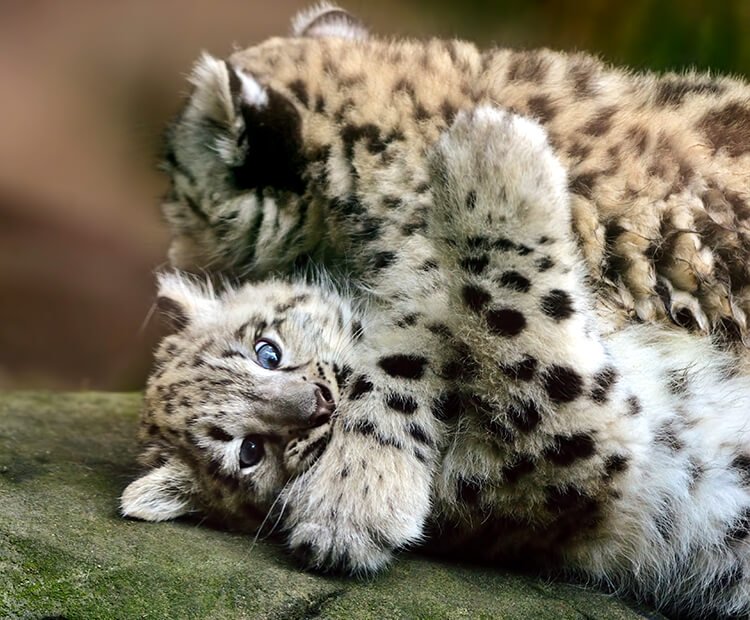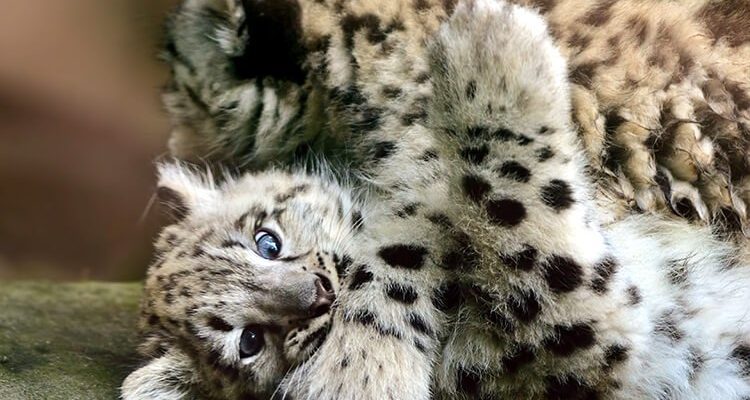
Let’s imagine a snowy landscape, where the air is crisp, and the terrain is rocky. The mother snow leopard, a solitary and powerful figure, finds a secluded den—often a sheltered rock crevice or a cave—where she’ll give birth to her cubs. In this article, we’ll dive deeper into how snow leopards nurture their young, starting from birth and exploring every step of their early lives, all while overcoming nature’s obstacles. You’re in for a journey through the wild, so grab a warm drink and settle in.
The Birth of Snow Leopard Cubs
Snow leopards usually give birth in the spring, around June, when the weather is milder and food becomes more abundant. A litter typically consists of two to three cubs, but sometimes mothers have as many as five! After a gestation period of about 90 to 100 days, the cubs are born blind and completely helpless, which means they rely entirely on their mother.
Here’s the thing: giving birth is just the beginning. The mother needs to choose a safe, hidden den. This could be in a rocky crevice or even a cave that keeps them shielded from the harsh weather and potential threats. This choice is crucial because it protects the newborns from predators and ensures they have a quiet environment to grow.
Once the cubs are born, the mother snow leopard is fiercely protective. She’ll spend the first few months in the den, which helps keep the cubs safe while they grow stronger. During this period, she may not eat much herself; she focuses on nursing and caring for her young. It’s a labor of love that requires her to tap into her survival instincts while also ensuring her cubs have what they need.
Feeding and Care of the Cubs
As the snow leopard cubs grow, they quickly develop from those tiny, helpless furballs to curious little explorers. They start nursing right away, but as they reach about two months old, they begin to transition to solid foods. The mother will introduce them to prey by bringing back small animals like birds or rodents.
Let me explain a bit more about this process: snow leopards are skilled hunters, and teaching their young how to hunt is a vital part of their upbringing. By bringing food to the den, the mother symbolizes both nourishment and the lessons of survival. Watching their mother hunt also helps the cubs learn the skills they’ll need to fend for themselves later on.
During these early months, the cubs will practice their pouncing and climbing skills. You might even catch a glimpse of them play-fighting, which, in addition to being adorable, helps them refine essential skills they’ll need as adults. This playful behavior is important for building their physical strength and learning social behaviors that will aid in their future interactions with other leopards.
Exploring Their Environment
Around the age of three months, snow leopard cubs become more adventurous. This is when they start exploring their surroundings, guided by their mother. They’ll follow her around and learn not only about their habitat but also the dangers that lurk within it.
You might be wondering why this exploration is so important. Well, being able to navigate the rocky terrain is crucial for survival. Learning how to climb and traverse steep cliffs helps the cubs develop the agility they’ll need as adults. Their mother often takes them to higher altitudes as they grow, teaching them how to use the landscape to their advantage.
During these excursions, the cubs also learn about different prey and their behaviors. They’ll watch their mother as she stalks and pounces, picking up tips and tricks along the way. This time spent in the wild is invaluable, shaping their instincts and honing their skills for when they eventually venture out on their own.
Independence and Leaving the Den
As the cubs near the six-month mark, they are becoming more independent and capable. At this stage, they often leave the den with their mother for longer periods. The mother begins to encourage her cubs to hunt small animals, gradually weaning them off milk. While they might still be a bit clumsy, they’re getting better.
Here’s an interesting fact: snow leopard cubs usually stay with their mother for about 18 months before they leave to find their own territories. This extended stay allows them to learn not just how to catch prey but also understand how to navigate social hierarchies among other snow leopards. Without this crucial time, they might struggle to survive on their own.
During this transition phase, the mother continues to provide guidance while also encouraging independence. It’s a delicate balance—she has to prepare them to leave, yet keep them close enough to keep them safe. It’s a tough job, but she’s up to the challenge.
The Challenges of Parenting in the Wild
Raising snow leopard cubs isn’t without its difficulties. Aside from the typical challenges of finding food and shelter, the mother has to remain vigilant about potential predators. Other large cats or even livestock can pose a threat to her young ones. Keeping them safe in such a harsh environment can feel like a full-time job!
Additionally, the high-altitude habitat means that food sources can be scarce. Snow leopards primarily hunt ibex and sheep, but when these animals are not available, it can be tough for the mother to feed her cubs. This is why the early training in hunting is so crucial; it equips them with the skills they’ll need to survive independently.
It’s also important to recognize that climate change poses a serious threat to their habitat. As temperatures rise, snow leopards may find their territories shifting or shrinking, making parenting even more challenging. The ability to adapt to these changes is vital for the survival of the species.
In the wild, snow leopard families face numerous challenges, but their parenting skills are miraculous. From their careful choice of dens to teaching their young about hunting and survival, mother snow leopards embody the spirit of resilience in the harshest of conditions.
As human beings, we can learn from these incredible animals. Their determination to raise their young against all odds reminds us of the importance of nurturing and protecting future generations. By supporting conservation efforts, we can help ensure that snow leopards continue to thrive in the wild.
So next time you think about snow leopards, remember that behind their majestic exterior lies a world of parental love and survival instincts. Just like us, they do their best to raise their young and prepare them for the world outside. It’s a beautiful yet challenging journey that showcases the strength of nature.

